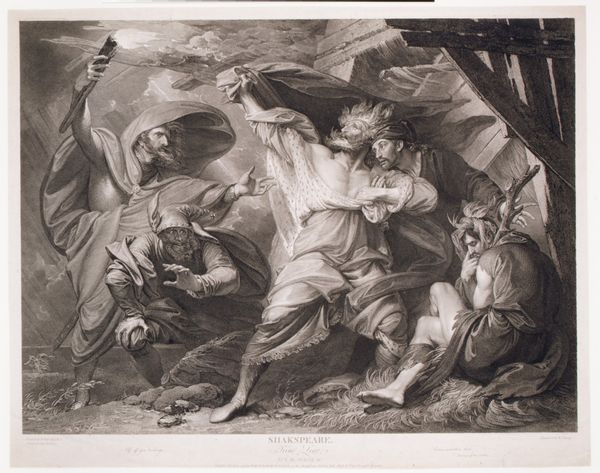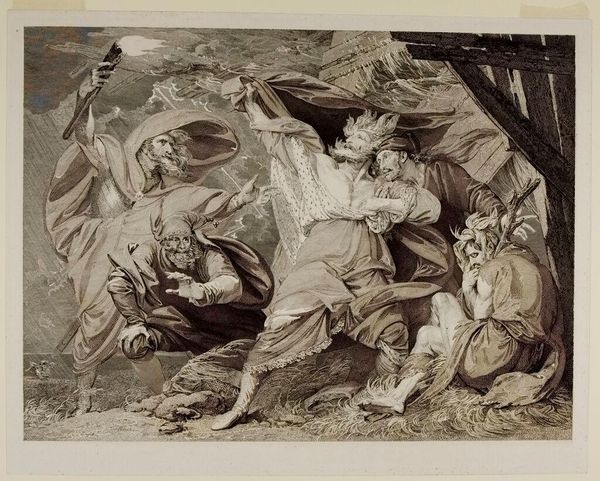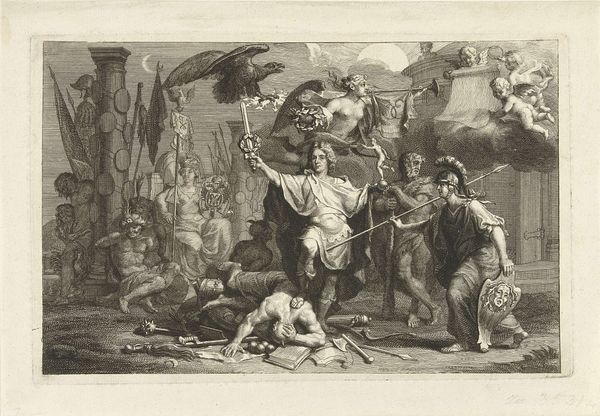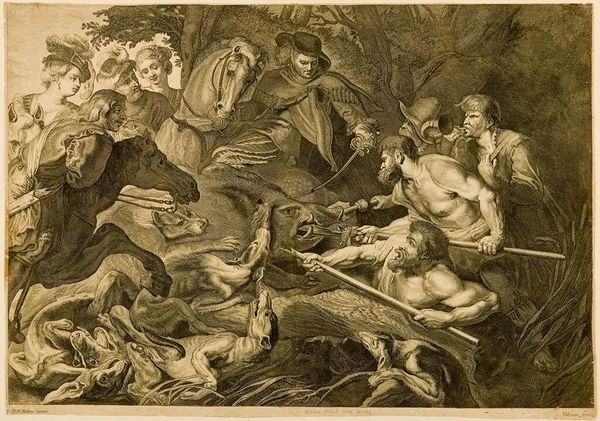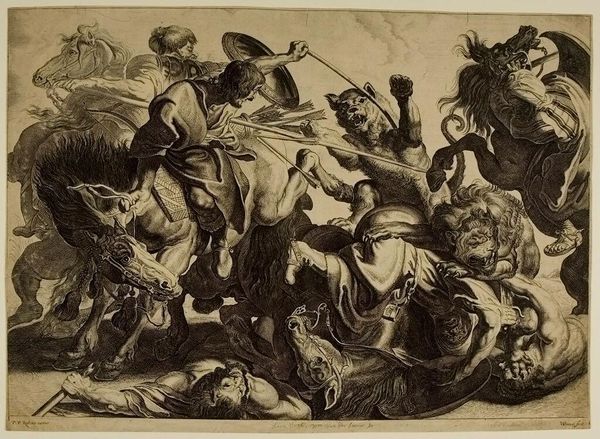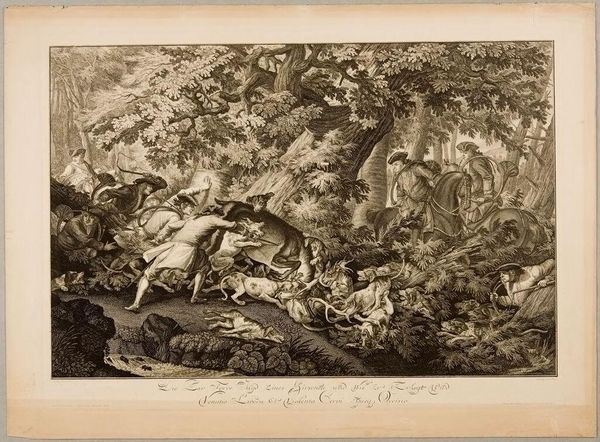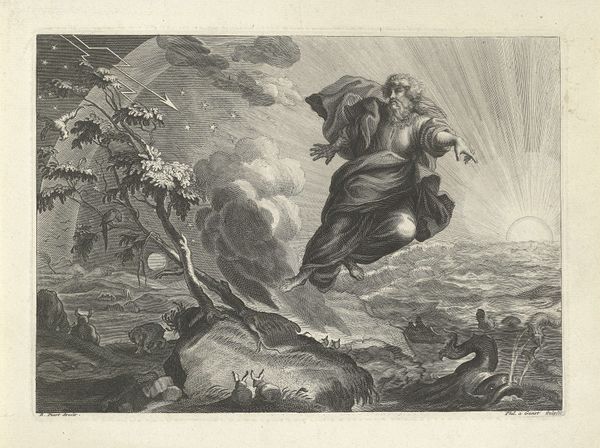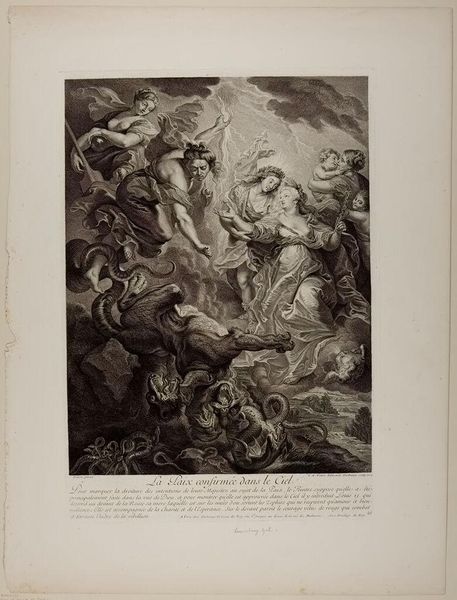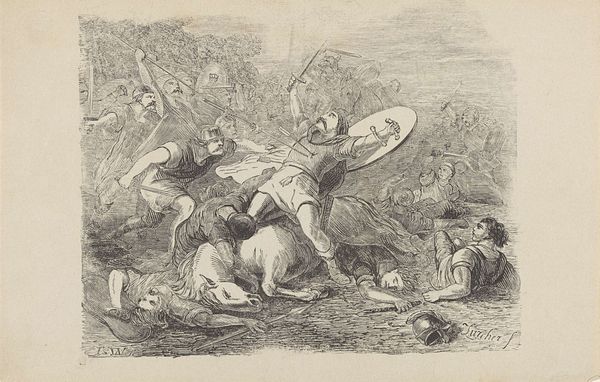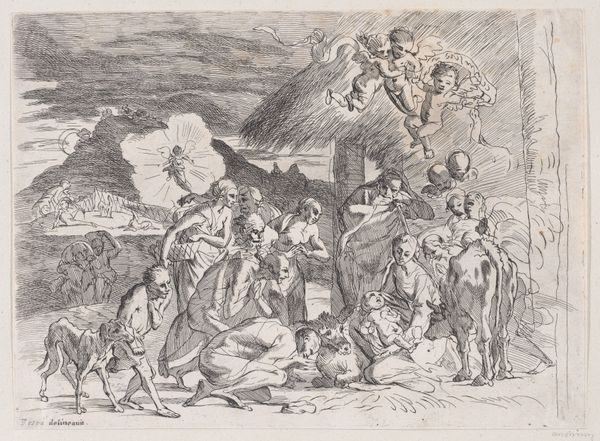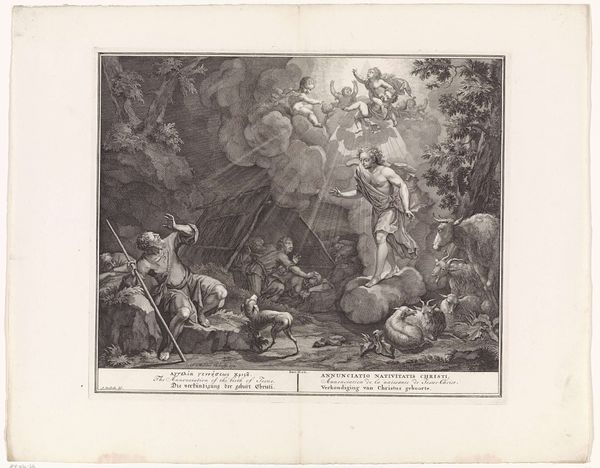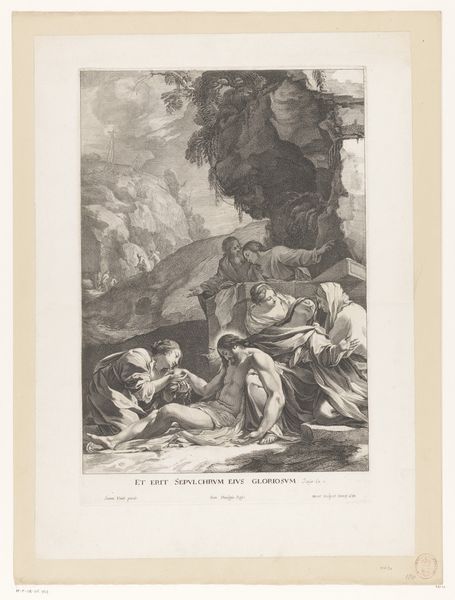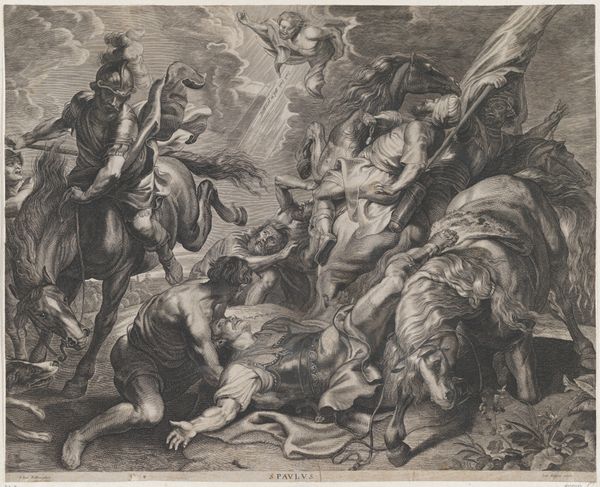
Copyright: CC0 1.0
Curator: William Sharp, born in 1749, rendered this dramatic scene, "King Lear: Act III, Scene 4." It's currently held in the Harvard Art Museums. Editor: What strikes me is the stark contrast—the raw, frantic energy of Lear amidst the relative stillness of the figures around him. There's an almost operatic feel to the composition. Curator: Absolutely. Sharp’s piece reflects the 18th-century fascination with Shakespeare, but also the increasing interest in portraying intense emotions, especially within a historical context. The image helped popularize the play’s themes of madness and authority. Editor: Note how the light catches Lear's bare chest and wild expression; it's masterful, emphasizing his vulnerability against the shadowy background. Semiotically, this positioning creates a hierarchy of suffering, placing Lear at its apex. Curator: And the surrounding figures, holding torches and huddling, really underscore the social upheaval Lear's madness signifies. This scene was often interpreted as a commentary on societal breakdown. Editor: Looking closely, the medium itself, likely an engraving, contributes to the sharp, almost brittle quality of the scene. It mirrors the tempestuous mood perfectly. Curator: It’s a testament to Sharp’s skill how he distilled the political and social anxieties of the time into such a powerful visual narrative. Editor: Indeed, and the formal devices he employs elevate it beyond a mere illustration, making it a lasting meditation on human frailty and the power of art.
Comments
No comments
Be the first to comment and join the conversation on the ultimate creative platform.
